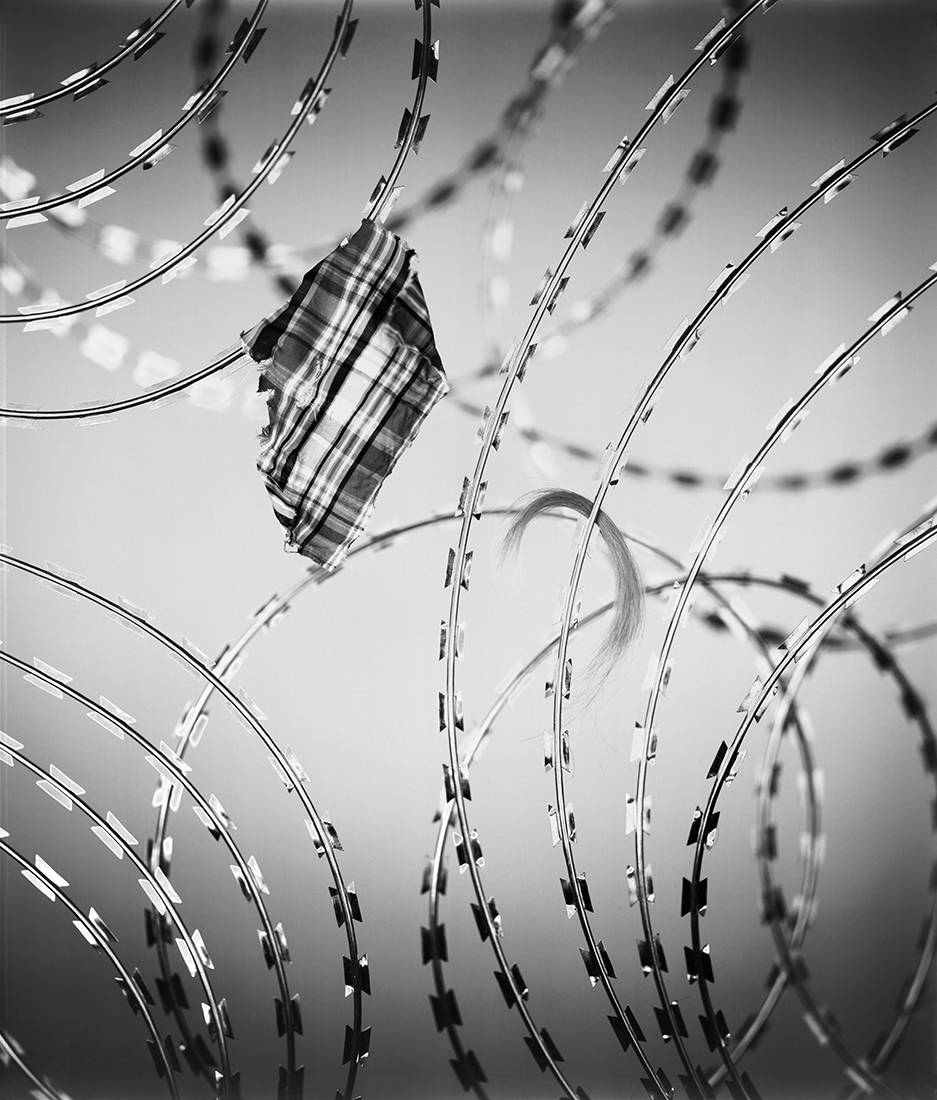TITLE: Razor Wire
People seeking protection are often forced to put their lives at risk. Militarily secured borders ensure that those seeking protection can only enter with difficulty or not at all. Ever closer cooperation with transit countries along the flight routes is intended to ensure that people are intercepted as early as possible. There are hardly any safe access routes. Thus, access to a fair asylum procedure is denied. This contradicts the Geneva Refugee Convention and international human rights.
AUTHOR: Josef Dreisörner (Germany)
Josef Dreisörner (born 1967)
Living in Munich, Germany
When encountering the works of Josef Dreisörner, one discovers an artistic position in which conceptual creativity is combined with craftsmanship. Just as the act of creating a picture is an active process, so is the process that his pictures set in motion in the eye of the beholder. Seeing goes beyond simple representational recognition to become a productive process of perception. The themes of his works are immediately recognizable and immediately understandable even without a legend, as his pictures tell a clear story that is open to interpretation. His works do not express an opinion, but open up spaces for reflection that the viewer can fill with their own thoughts.
Josef Dreisörner’s analogue black-and-white photographs enable him to capture his motifs – especially the human face – with a strong authenticity far more than any color photography, and to bring socially relevant themes to the point with great conciseness in his conceptual still lifes.
His Klimsch Unikat close-up portraits create unique, visually and psychologically precise insights into the human face – an aesthetic that initially alienates the viewer, but is precisely intended in its consistency of depiction. These human faces are unadorned, direct and truthful. Josef Dreisörner’s portraits are a consistent alternative to the arbitrary images of people that have been passed through countless filters and presets, produced and shared millions of times a day, in which every mistake is corrected and every desired aesthetic result is produced retrospectively. This practice of depicting leads to an ever-increasing standardization of visual language, to a monotony of uniform visuality and to a great loss of meaning in seeing.
In Josef Dreisörner’s black-and-white still lifes, the decorative aspect tends to take a back seat. Although he himself is committed to high aesthetic standards, his conceptual still lifes are intended to draw the viewer’s attention to socially relevant themes in order to create a space for interpretation and invite discussion.
Such pictorial statements are mainly realised by means of so-called large-format cameras. Of particular note is the Klimsch Praktika reproduction / process camera built in 1957 with a film format of up to 50×60 cm (20×24 Inch). Photographs are taken analogue on black-and-white film or with direct exposure on black-and-white positive photo paper. When using the positive photo paper the captured image cannot be reproduced in analog photographic technology, and there is no option of analogue or digital post-processing. The captures on film are realized by means of the Palladium /Platinum Print process. Due to the 50×60 cm film format of the Klimsch Praktika reproduction / process camera, he is one of the few photographers who is able to produce analogue negatives and thus Palladium /Platinum Prints with a size of up to 50×60 cm (20×24 Inch). In this process, hand prints are made on natural paper whose incomparable quality, aesthetic beauty and permanence were already appreciated by the pictorialists of the 19th century.
Equipment:
Klimsch Praktika Process / Reproduction Camera, Film format 50x60 cm/20×24 Inch
SHARE
Support this photographer - share this work on Facebook.

